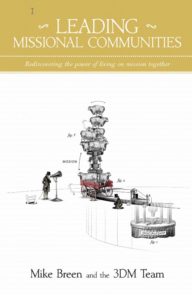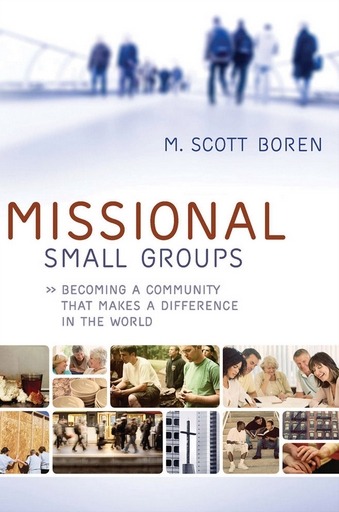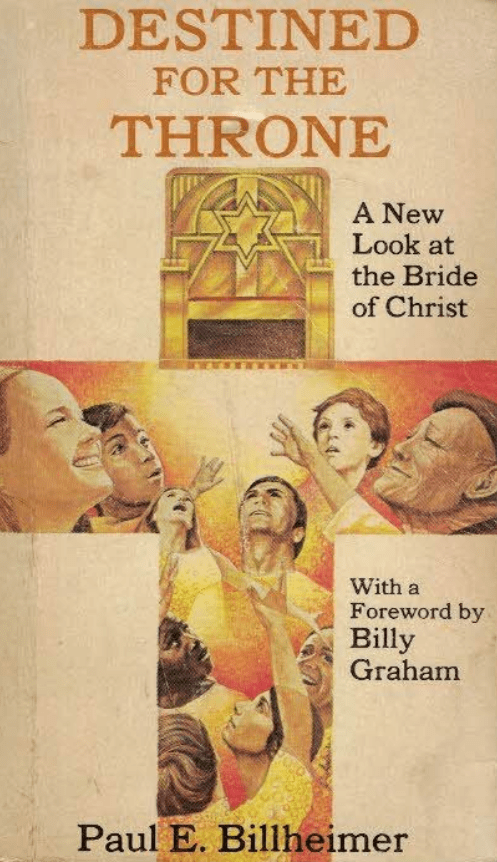
Leading Missional Communities
by Mike Breen
Mike Breen has put together a wonderfully practical book full of sound biblical principles and real life experiences to assist leaders of missional communities (MCs) in the challenging endeavor to reshape the church around better fulfilling the Great Commission. This summary will give you some of the highlights from the various chapters, which will hopefully whet your appetite to read the entire book.
Part One: Foundations for MCs
Chapter One: Understanding MCs and Oikos
Our commission is to compassionately reach out to those around us, invite them to join us in community, share the story of the gospel, make disciples, and gather them into families to follow Jesus together. That’s really what starting an MC is all about. This is not a fad or the latest church growth technique or a new name for cell groups. It is rediscovering the church as oikos, an extended family on mission where everyone contributes and everyone is supported. So, it isn’t that MCs aren’t important. They are, and that’s why we wrote this book.
But MCs are simply the initial vehicle we learn to drive that gets us to the real destination: learning to live as oikos, extended families functioning together on mission with God.
MCs are the training wheels that teach us how to ride the bike of oikos. They are the scaffolding that allows us to rebuild the household of oikos. MCs are the cocoon that allows the butterfly of oikos to emerge… We believe oikos is something the Spirit of God is doing in this time to restore the church’s ability to function fruitfully in discipleship and mission the way the early church did, publicly living out our faith in the various neighborhoods and relational networks of our cities.
We firmly believe this is the make-or-break issue for the Western church. We simply will not see God’s dream for the world come true unless we learn how to function as extended families on mission.(Breen, Mike. Leading Missional Communities (Kindle Locations 122-134). 3DM. Kindle Edition. Emphasis is mine.)
Breen defines a missional community as follows.
A Missional Community is a group of approximately 20 to 40 people who are seeking to reach a particular neighborhood or network of relationships with the good news of Jesus. The group functions as a flexible, local expression of the church and has the expressed intention of seeing those they are in relationship with become followers of Jesus with them. They exist to see God’s Kingdom come to their friends and neighbors. The result is usually the growth of the MC (as people become followers of Jesus and join them) and then the multiplication of new MCs (as people are trained to lead within the MC and then are sent out to start new MCs). They are networked within a larger church community, allowing for a “scattered” and “gathered” expression of church. (Kindle Locations 149-155)
As an aside, Life Community Network (dba LifeNet), where I pastor, is pioneering this church model in our area. Presently we are rather small but have a vision to expand the number of life communities as God enables us. We gather once a month as a network and scatter the other weeks into our small groups.
Missional vision is focused on sharing the good news of Jesus and making disciples among the people of a specific neighborhood or network of relationships. A neighborhood-focused MC centers on serving and bringing the good news of Jesus to the people who live or work in a particular geographic area (e.g., a housing subdivision or a few blocks of streets). A network-focused MC seeks to serve and bring the good news of Jesus to the people within a particular network of relationships (e.g., a sports club, creative professionals, a hobby group, a business community, students, a subculture in the city, etc.)…
The MC emphasizes living among and working with the people or place they are seeking to impact. This “incarnational principle” helps prevent MCs from becoming a series of service projects performed by people who are disconnected relationally from those they are serving.(Kindle Locations 184-193)
Chapter Two: Communities of Discipleship
The first principle is that you’ll need to build a discipling culture at the heart of your MC if it is going to be fruitful long-term… What do we mean by a discipling culture? … A discipling culture simply means that making disciples of Jesus is what is always happening in your MC. The Great Commission is to make disciples. Jesus says that he will build his church, (2) and our task is to make disciples. (3) Sometimes we get this backward and think that if we can figure how to build the church, then the end result will be disciples. But it actually works the other way around: We make disciples, and Jesus builds his church. Thus, the culture and mindset we want to build in our MCs is a discipling culture, where people understand clearly that we are called to both be and make disciples of Jesus. Making disciples of Jesus is what is always happening in your MC.
This means that within an MC, we are learning to trust and follow Jesus in every area of our lives, growing to become more and more like him in our character (who we are) and competency (what we can do). As we do this, we invite others to share this life of discipleship with us, growing in expectation that God’s Kingdom will break into every area of our lives.
We cultivate an identity as a “sent” people, missionaries to whatever sphere of influence or context we find ourselves in. As we truly make disciples (people who are becoming the same kind of person as Jesus was and doing the things he did), evangelism becomes a kind of overflow of our life of discipleship, rather than a program or event. Instead of feeling forced or contrived, evangelism will feel natural as people are drawn in by the fruit they see in our community.
A discipling culture is about encouraging and cultivating the development of a missional lifestyle (faith at the center of everything we do) rather than missional events (faith at the center of events we organize).(Kindle Locations 250-272)
Chapter Three: Communities of Good News
How does this understanding of the gospel play out, then? …our foundational understanding of Scripture is rooted in the two over-arching themes of Covenant and Kingdom. Right at the beginning of Genesis and all the way through to Revelation, we are called into a relationship with God (Covenant) and the responsibility of representing him to others (Kingdom)… When we look at the life of Jesus, we see him build a discipling culture by bringing to those who followed him an invitation to a Covenant relationship and a challenge to join God in the mission of the Kingdom.
As people engaged in this amazing relationship with Jesus and the adventure of the Kingdom mission, the natural outcome was that the disciples became a dynamic community on mission… Breen, Mike. Leading Missional Communities (Kindle Locations 383-390). 3DM. Kindle Edition.
The author uses a picture to illustrate some of what is related to covenant and kingdom.  As members of the covenant family we are in relationship with God and one another. We have a responsibility to invite others through the Gospel to enjoy the same covenant privileges as we enjoy. This is when the covenant community becomes a missional community.
As members of the covenant family we are in relationship with God and one another. We have a responsibility to invite others through the Gospel to enjoy the same covenant privileges as we enjoy. This is when the covenant community becomes a missional community.
Chapter Four: Finding the Person of Peace
A third foundational principle is understanding and practicing Jesus’ Person of Peace strategy for evangelism, and letting the rhythm of your MC flow from your relationships with the People of Peace you find. It is difficult to overstate how important this is. Jesus lays out this strategy in Luke 10: 1-16, instructing 72 disciples in how to prepare people in the towns and villages he was about to visit. A central part of his strategy was for them to center their ministry around a Person of Peace (translated “a person who promotes peace” in the NIV). The Person of Peace was someone who welcomed these disciples of Jesus into his or her home, was open to the message they were bringing, and served them. (Kindle Locations 520-525)
The thing about the Person of Peace strategy is that it’s not simply pragmatic. That is, it’s not just a convenient way to find people to disciple. It’s actually a way of noticing what God is already doing in your mission context. Here’s why: A Person of Peace isn’t just someone who likes you. Jesus told us, “Whoever listens to you listens to me,” so, if we are representing Jesus, these are people who are actually showing us that they are interested in Jesus!
They are people in whom God has already been working, preparing their hearts for the good news of Jesus. So we “stay with them” because, in doing so, we are joining in with what God is doing in their lives, cooperating with the Holy Spirit.
Finding a Person of Peace means discovering where God is already at work in the neighborhood or network of relationships you’re seeking to reach. The first step is always to identify the People of Peace in whatever neighborhood or network we are seeking to reach. Then, we “stay there,” as Jesus said, finding ways to intentionally spend time as a community with these People of Peace, sensitively exposing them to various “Kingdom experiences” (joy in community, kindness, service, fun, testimonies of God’s work in our lives, meals together, prayer and worship times, etc.). You simply invite them into what you’re doing as a community. (Kindle Locations 537-547)
Chapter Five: Both Organized and Organic
Families exist along a continuum of the organized and the organic, the structured and the spontaneous aspects of life together… It would be odd for a family member to attend only the dinner and leave immediately afterward if no official activities were scheduled. Likewise, it would be odd for someone to skip Thanksgiving dinner because he or she were tired or just didn’t feel like coming. Being part of a family involves a commitment to the structured and the spontaneous elements of the family’s life together. The structured times inform and feed off the spontaneous times, and vice versa. If the structured events didn’t happen, the spontaneous interactions wouldn’t be as rich. If the spontaneous stuff wasn’t happening, the structured events would eventually feel like a chore.
Families need the organized and the organic to create the texture of life together. MCs should have the same texture, the same balance of organized and organic elements, so they become places where people experience being an extended family on mission. (Kindle Locations 617-632)
Part Two: Leading MCs
Chapters Six through Eight give some practical advice on how to successfully lead missional communities. Chapter Six focuses on the importance of vision and prayer. Chapter Seven gives three examples of how missional communities can work. These are not prescriptive; rather, they are meant to inspire. Chapter Eight focuses on growing and multiplying our groups and missional community. Breen gives five signs of oikos that are helpful.
- Eating Together
- Playing Together
- Going on Mission Together
- Praying Together
- Sharing Resources
My own experience with leading a missional community is that pursuing oikos is one of our biggest challenges. Our society works against the process. We have become increasingly isolated from one another due to a number of factors, and rebuilding what has been lost will require vision, commitment, and perseverance. Breen writes:
It’s easy to feel overwhelmed when thinking about the rhythm of your MC, and because of this, we find that people fall into one of two ditches: They either over-program their MC, making it feel like a series of events, or they don’t meet enough because they don’t want to “burden” people. Ironically, the latter ends up making the MC again feel like a series of events, just less frequent (and poorly attended) ones. Neither ditch actually creates a sense of extended family.(Kindle Locations 944-948)
Leadership development is another large challenge to growth and multiplication. Whereas every person in an MC is discipled to be part of the community on mission, leaders must be discipled more intensely. They have more to learn and more responsibility.
MCs are a great vehicle that gets you to the missional places God is calling you to go, but discipleship is the engine.
This is the pattern of Jesus. He was always training his disciples to do the same things he did. So as you lead, you’re always raising up new leaders. As you engage in mission, you’re always raising up new missionaries. It means always having an eye on training others to do the things we’re learning to do ourselves.
Healthy multiplication happens only if you have quality leaders, and you get quality leaders only by being intentional about raising them up. They don’t get it simply by osmosis— you need to train them.
Having a healthy, accountable leader with vision is the rate-determining step for multiplication. This means that multiplication will never go faster than leadership development. You will never multiply your MC faster than you raise up new leaders who can do what you do. Breen, Mike. Leading Missional Communities (Kindle Locations 1109-1117). 3DM. Kindle Edition.
Part Three: Practical Tips
Chapter Nine gives some reasons why missional communities fail. These are worth studying as a warning us against making common mistakes. Chapter Ten answers some frequently asked questions. One of these, as you might expect, concerns properly working with children.
For MCs that have children involved (which is most of them that we’ve seen), kids are almost always one of the first issues people ask about. What do we do with the kids? How do they fit into this thing we’re doing? The overarching principle to keep in mind here is that MCs are the training wheels that help us ride the bike of oikos; MCs cultivate a sense of being an extended family on mission!
In other words, we’re not trying to plan a slick production— we’re trying to build a family. And families have kids in them.
In a family, sometimes the kids and adults are together doing a “grown-up thing,” such as dinner or evening devotions. Sometimes the kids and adults are together doing a “kid thing,” such as a birthday party or decorating Christmas cookies. And sometimes the kids and adults are doing separate but related things, such as the kids playing games in the basement while the adults talk upstairs after dinner.
The question really shouldn’t be, “How are we going to deal with the kids?” It should be, “How are we going to disciple our kids well?”… We have often been surprised by how deeply the experience of being consistently included in a family on mission imprints itself on a child’s soul. (Kindle Locations 1331-1340 and 1389-1390)
The last thing we want is for our kids to become segregated from the adults and alienated from church life as a result. Our children should be included in as much as they can handle so they will know they are integral to the missional community.
Part Four: Conclusion
Breen reminds the reader that missional communities do not have to achieve “great things;” rather, we are able to focus on doing small things well, just as the early church did. If we concentrate on ministry to people in our neighborhoods and other relational networks, if we deliberately serve those Jesus calls “the least of these my brothers” – the marginalized, the oppressed, the poor, etc, if we focus on loving people, serving them, and sharing the Gospel, these “small things” will become great in the eyes of God.
This is ultimately what starting an MC is all about. As we learn to become an oikos together, our job isn’t to try to do big things. It’s simply to do the small things we see around us with great love, trusting that God will take our small things and all the other small things we don’t see and weave them all together into a tapestry that announces His love for humanity and calls all people to new life under God, who is making everything new. (Kindle Locations 1587-1591)



